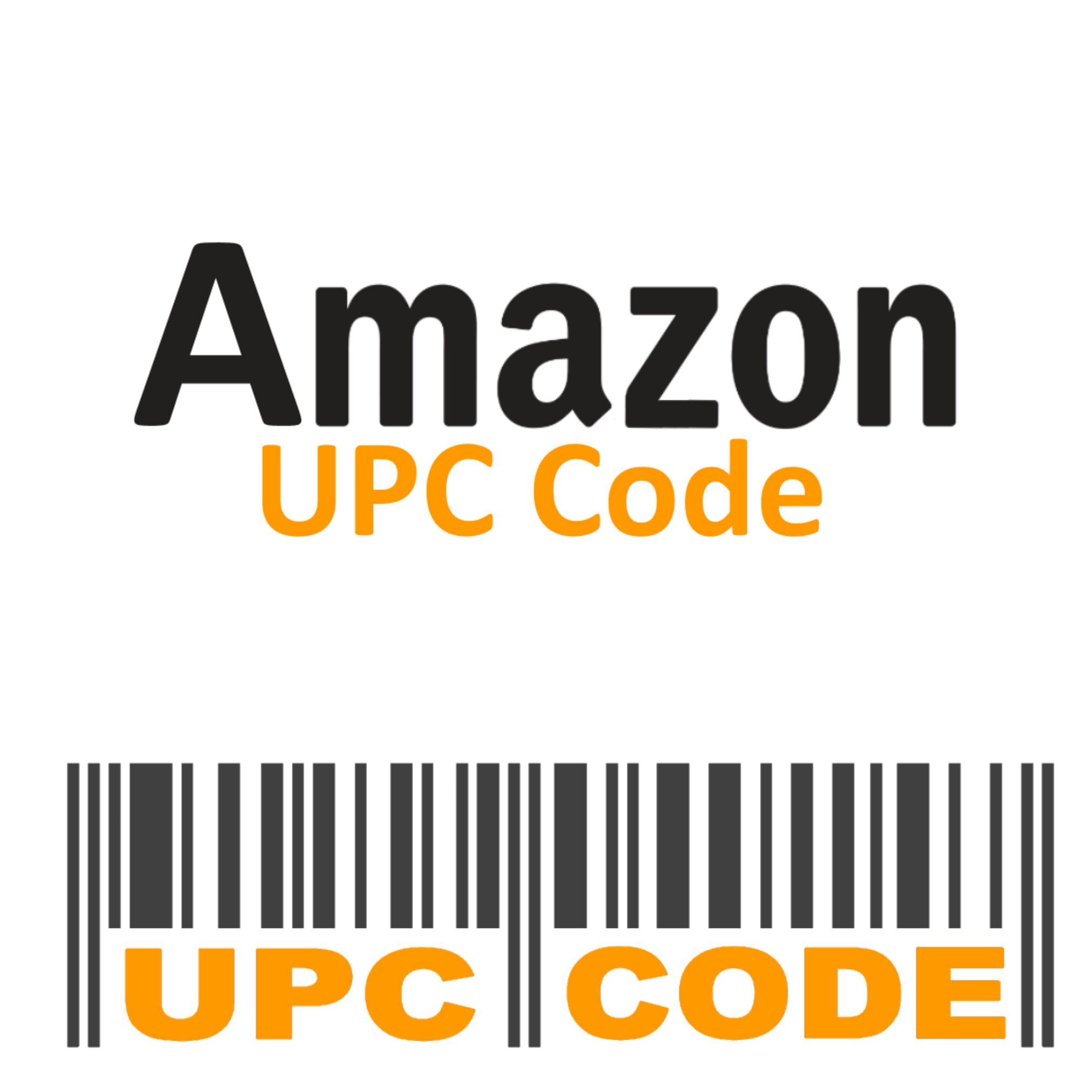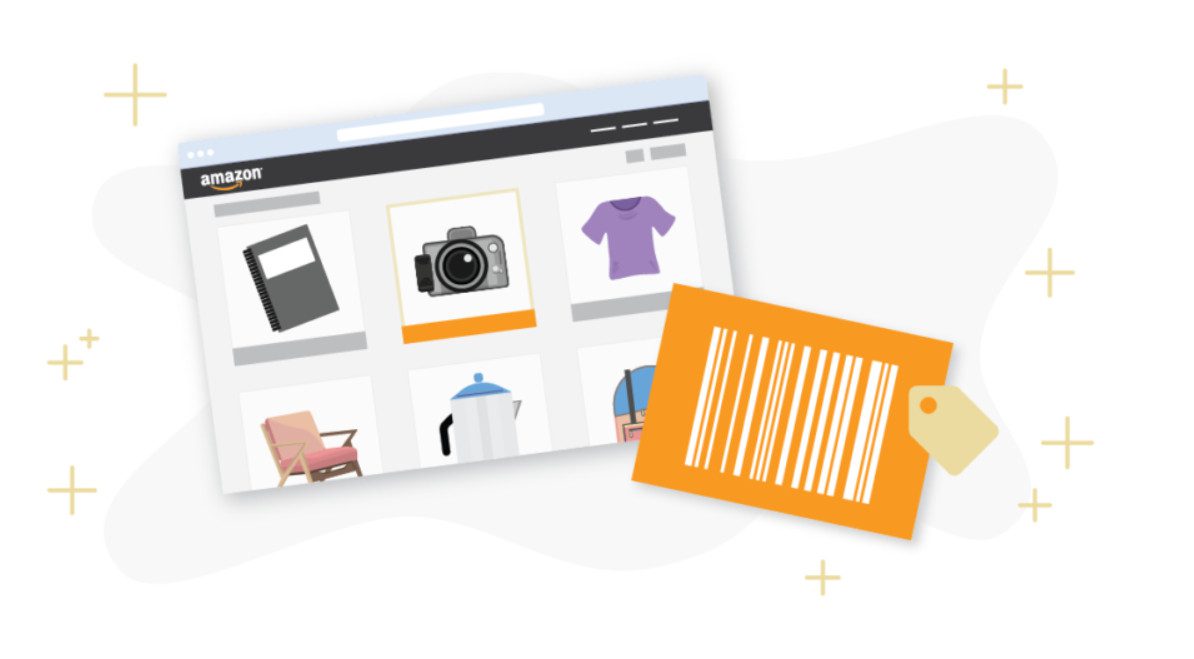Table of Contents
 Universal Product Codes (UPC) is a 12-digit barcode used by most retailers in the United States, and Amazon is no exception. In fact, it is at the forefront, requiring all sellers seeking to list new products to have a UPC. Amazon uses these UPC codes to identify products in their database.
Universal Product Codes (UPC) is a 12-digit barcode used by most retailers in the United States, and Amazon is no exception. In fact, it is at the forefront, requiring all sellers seeking to list new products to have a UPC. Amazon uses these UPC codes to identify products in their database.
For sellers on Amazon to acquire the UPC, they must get them from GS1 or Global Standard 1, which is the only official profitless organization that generates exclusive Amazon UPCs codes. GS1 has set international standards on inventory chain bar-coding for all retailers around the world. Sellers seeking to add rare items need a unique UPC, and each item needs a product number with a single UPC.
GS1 delegates each supplier with Global Trade Item Numbers (GTINs), which they transact with on Amazon. To begin applying the UPCs, sellers need an Amazon Merchant Account which will facilitate the process of adding new products to their Pro Seller account (Amazon catalog).
Do Amazon Sellers Always Need a UPC Code?
All products sold on the Amazon platform need a UPC, with a specific exception. When you create your brand and register it with Amazon.com using the Brand Registry Program, you are eligible for a GTIN exemption. Such an option allows sellers to add their products without a UPC number.
Besides, if your item requires a UPC, it doesn’t always mean you will need to buy one or mark your products with it.
If you are purchasing goods from a dropshipping, wholesale, or retail arbitrage, most likely that the packaging of your products will already be with a UPC to scan. In this case, your items will probably be in the platform’s system, and your task is only to add your items to the respective listing.
Another possible way you don’t need a UPC code is when you fulfill your orders yourself and don’t use the FBA program. Thus, if your items don’t come with a UPC, you need to buy one to register your product listing. Nevertheless, there is no need to add the barcode to each of your items.
How GTINs Work
Global Trade Item Numbers are numerous styles of number structures that are assigned to different products and services by GS1.
Global Standard 1 keeps a record of the product’s barcode in their database in a 14-digit GTIN format, which can be identified by a machine numerically or as a pattern of coordinates. Universal Product Codes (UPCs), European Article Numbers (EANs), and Japanese Article Numbers (Jans) are all diverse types of GTINs, but the first two are the dominant types that are primarily used.
The type of barcode that a product utilizes dictates how the GTIN will encode the barcode. GTINs are only numerical values used to identify the barcode of your product. The GTIN will either take 8, 12, 13, or 14 digits, which are a numbering system associated with GS1. While GS1 is feeding the resulting GTINs in the database, the other fields that are unfilled are all numbered 0. The GTIN calculator may help sellers interact with the formula to arrive at the barcodes.
In a barcode, the first seven to eleven digits serve as a particular identifier called a company prefix. This prefix, which is hitherto used to pinpoint the owner of the brand or the manufacturer of the products, is inscribed on the items that the company produces to identify ownership. UPCs for the sellers’ products are generated by combining the GTINs with the prefix of the company to come up with a unique product number that will be different on all products even though the same company produces them.
How Amazon Uses GTINs
For sellers interested in buying the UPCs outside GS1, which is the only legitimate platform, they can buy UPC codes that are previously used. However, the limitation is that the company prefix will identify the initial owner instead of you, who is the current owner. In doing so, you break Amazon policies. It is procedural for Amazon to maintain checks and balances by:
a. Checking UPCs against their list of designated brands that require UPCs as soon as a new listing is created on the platform.
b. In case of a listing that cites a particular designated brand in the title, Amazon has the responsibility to check and counter–check to eliminate a possible conflict of brand names.
c. In circumstances where the seller is phony or has a history of using unconventional methods or is under investigation for a myriad of reasons, Amazon must manually check and confirm the UPCs.
UPC Codes: What are They?

At the height of supply-demand in Australia, Europe, and Asia, the need to differentiate sellers by location was paramount. GS1 resulted in associating codes of countries with the UPC string, indicating the codes at the beginning of the string. The United States and Canada share the country code (0).
As a result of the change, two mainstream forms of UPCs were developed. These are UPC–E and UPC–A.
UPC-A has a twelve numeric capacity with the zeros featuring among the twelve digits, is omnidirectional, supports GTIN -12, and does not endorse attributes. On the other hand, UPC –E has a twelve numeric capacity, but zeros are not featured because they are suppressed. The two systems share other qualities.
The two systems are spitting images of the other with the only difference being that 0s do not appear in the UPC-E while the UPC-A contains 0s. To note this deviation, one has to look at the corresponding GTIN as the 0s will not be visible within the GS1 barcode.
Presently, UPC barcodes are applied inside the US and Canada jurisdiction as most countries prefer the EANs even though they can scan Amazon UPCs.
Need a clear explanation of the difference between various product identifiers that help keep track over all the items in the Amazon database? Wondering ‘What is ASIN mean’? Read our post to get armed for your venture on the platform.
All About EAN Codes
European Article Numbers (EAN), also referred to as International Article Number is barcodes that contain country codes within the actual strings issued by the GS1 barcode generator. For UPCs, the country code is not attached to the string, which is the primary reason why UPCs have no more than twelve digits. Meanwhile, EAN barcodes have a maximum of thirteen digits.
Two fundamental forms of EANs, which have gained admiration by people selling on Amazon, are the EAN-8 and EAN-13. The EAN-8 has a capacity of eight numeric, is omnidirectional, and supports GTIN-8. The EAN-13 has a size of thirteen numeric, is also omnidirectional, and supports GTIN-13.
Just like the UPCs, numerous factors like product category and the distribution channels of the products influence the type of EAN one will use.
Keep in mind that if the information on the UPC you are using contradicts with the one they find in the GS1 database, Amazon will eliminate your listing.
Is it Necessary to Buy a Personal Amazon UPC Code?

With every product that a seller lists in the marketplace Amazon call for a trader to register a GTIN. Sellers are, therefore, allowed to decide whether to invest in official Amazon UPCs or pursue other options like buying from a reseller.
UPC and EAN dealers can easily be found in the market, and some will sell duplicated UPCs just to meet Amazon UPCs requirements, and therefore lower their prices. However, in the long haul, this bypass will cost you more problems than solving them.
The main setback of replicated UPCs is that they are not always found in the GSI database upon being searched.
By design, GSI is the only producer of the GTIN system, thus making Global Standards 1 the only legitimate source to validate the quality and ascertain if the barcode is genuine. Buying from a third-party dealer such as eBay will deny you ownership of the company initials attached to the string of the UPC. Even though Amazon does not precisely eliminate the listings that contradict with the GS1 database, the future of such listings is up for discussion as Amazon ponders on how to deal with sellers who buy barcodes. For every product the manufacturer produces, a company prefix will be uniform on all the barcodes of the products.
Of late, GS1 codes have received much emphasis, and experts advise sellers to stay vigilant and be up to date with Amazon’s policies on PCUs.
The Process of Buying Amazon’s UPC Codes
Step 1: Company Prefix
The first step in buying UPCs from Amazon is applying for a GS1 company prefix. This is an individual identifier that is unique to the manufacturer of the product. For every product the manufacturer produces, the company prefix will be used. Thus, the company prefix will be uniform on all the barcodes of the products. The product code that each item will have will always have the prefix of the company.
There exist various methods that a business owner can follow to pursue a company prefix. One of the ways is to purchase barcodes. However, it is paramount that when you are buying UPC for your company, you consider the legality of the transaction to avoid ending up with forgeries. This would put you in profound legal turmoil. Also, informal prefixes may injure the reputation of your supply chain and make the legitimacy of your brand questionable.
The safest and surest way to get a company prefix is to purchase UPCs straight from GSI. GS1 will have smoothened the process of getting the codes, and you can quickly get the information on how to proceed directly by visiting their website.
The startup fee is about $250 when the cheapest. The fee could, however, get to $10,000 as per the number of items you intend to sell on the platform. GS1 further charges a renewal fee and a maintenance fee ranging from $50 to $300.
Even though it would sound attractive to hunt for cheaper UPCs, the risk involved is way much higher than the cost of buying from GS1.
Step 2: Product Number
The second step is assigning each of your retail products a unique product number. GS1 will present to a seller a set number of digits that the sellers will use to come up with their system of numbering guided by the estimated number of products the seller intends to produce and sell.
Amazon Standard Identification Numbers (ASINS) are formed from this set of numbers, and the seller can decide to also follow them up with their respective Stock Keeping Unit (SKU). The transition from Amazon ASIN number to UPC enables sellers to form an opinion of how they would like the prefix of their company to read. The conventional way dictates that each SKU of every product be assigned a product number that is unique.
You are retailing different phones as a product selection. You have three varying colors of the same phone (black, brown and white). Each phone must have its product number which has to be different from the other two.
Black phone: 099
Brown phone: 089
White phone: 079
UPCs for Amazon require the prefix of the company, accompanied by the unique product UPC number, to be a total of eleven digits at all times. The last digit of a barcode, which is the twelfth, is referred to as the “check digit.” The UPC digit calculator arrives at the number based on the eleven digits that preceded it on the barcode.
Step 3: Display
The third step is to establish how the barcode will be displayed on your product. GS1 comes in handy with a digital barcode file for sellers who have not been in a position to package and design labels for their products. Working with digital barcode files is something most manufacturers find easy to deal with. It is important to keep in mind that Amazon is tech-savvy, and chances are very high that they have employed robots to process your shipment. So the smoother their job, the faster your products will enjoy the online presence and make it possible for you to sell.
For the sellers who have been able to label and package their products successfully, they are open to requesting adhesive barcode labels to stick on the product.
It is vital that the barcodes picked for this task are well visible and contain accurate details that conform to those on the database of GS1.
Step 4: Barcodes
After going through the first three processes, the seller can now order the barcodes. Some websites have specialized in the printing of barcode labels.
The final step is placing the barcodes on the products in a way that they can be easily identified and scanned. UPC placement is a very crucial part of the process. Amazon imposes strict regulations to follow when placing the codes. Amazon will often go into smaller details of the how and where just to make sure the seller gets it right. Otherwise, the product will be redundant if it cannot be identified by the barcode checker at the beginning of the process.
When Don’t Amazon Sellers Need To Purchase a UPC?
UPCs assist shoppers and the Amazon platform itself in understanding exactly which product you are selling. It is very useful in a highly crowded marketplace where there might be thousands of similar items that are, in fact, different.
- If Amazon sellers have created their new item or sell private-label goods they have bought or had manufactured on their behalf, they are required to assign a unique UPC code to each option of these goods. Until the products get a specific numerical ‘check,’ shoppers and retailers cannot search and identify the goods.
- If Amazon sellers are reselling items that already have UPCs —typically attached on the back of the product itself or its packaging – there is no need to buy a new UPC. Users can select the UPC method and add the actual number to the item ID field to list their products.
- If the exact product Amazon sellers are trading is available for sale on the platform, they won’t need to create a new item page to support the goods. In this case, the sellers can opt for the ASIN (Amazon Standard Identification Number) and use it for the existing Amazon listing.
- If the product Amazon sellers are offering isn’t in their physical possession (for instance, dropshipping), they can contact the manufacturer or supplier to get the necessary UPC code. In some cases, it’s possible to find the number by simply locating the item online or in-store. However, make sure that the products you are going to sell match the code. If you are unsure about it, check the issue with your manufacturer or supplier before employing the code.
Final Thoughts
In summary, it is important to be aware that Amazon is always reviewing their catalog and in the process of doing massive cleanups in a bid to maintain and improve the authenticity of the products traded on the platform. With the interest of the customers at the heart of Amazon’s operations, the overhauls ensure the continuity of premium services for present and future customers.
As a seller, it is paramount that you ensure that your seller account is compliant with the new policies that are regularly reviewed and updated. The prospect of losing profits because your listings and accounts have been suspended is way lower than the effort you could have put toward making sure you comply with the policies.
What’s more? Properly labeling and shipping the product is crucial. And to keep track of many selling processes at once, we recommend doing as many routine tasks as possible on auto-pilot. So let’s start with generating reviews and replying to customer queries.
Register for a free 30-day trial and discover how SageMailer can help you with seller feedback and make your brand more successful than ever before.

